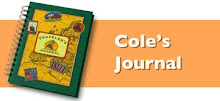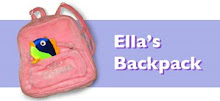 For me, Barcelona is a hard city to describe. There’s plenty to keep you busy, but at the same time, I found that it doesn’t have near the historical monuments as its European neighbors. Its biggest asset is its location on the sea, although this time of year that doesn’t really matter. Another thing that I didn’t realize is that in Barcelona you’re in Catalunya, not Spain. This region has its own language, history, and culture, and is often at odds with the central Spanish government. Today the Catalan region includes the northeast coast of Spain (from France to Valencia including the Balearic Islands), a small part of southern France, the small country of Andorra, and even the city of Alghero, Italy. Catalan is taught in schools as the first language and businesses are required by law to display all information (e.g. menus, posters) in Catalan before any other language (even Spanish).
For me, Barcelona is a hard city to describe. There’s plenty to keep you busy, but at the same time, I found that it doesn’t have near the historical monuments as its European neighbors. Its biggest asset is its location on the sea, although this time of year that doesn’t really matter. Another thing that I didn’t realize is that in Barcelona you’re in Catalunya, not Spain. This region has its own language, history, and culture, and is often at odds with the central Spanish government. Today the Catalan region includes the northeast coast of Spain (from France to Valencia including the Balearic Islands), a small part of southern France, the small country of Andorra, and even the city of Alghero, Italy. Catalan is taught in schools as the first language and businesses are required by law to display all information (e.g. menus, posters) in Catalan before any other language (even Spanish).The best place in town to ramble is Los Ramblas. This one-mile grand boulevard is full of life. In Italy the street performers all stand like statues in their silver and gold costumes. Here they take on a whole new art form and it looks like Halloween. Another favorite for the kids is the numerous pet kiosks along the boulevard. You can find turtles, birds, ferrets, rabbits, fish, and even chipmunks. You can also find numerous flower stores, a great fresh food market, and lots of shopping. Other sights we found around town include the Picasso, Dali and Maritime museums along with several Antonio Gaudi masterpieces.
Above: Looking across the rooftops from our apartment to the Church of Santa Maria del Mar.
Below: Barcelona's own Arc de Triomf.
 These geese take up residence at the Cathedral of Barcelona. For several centuries, geese have been used in the gardens to alert the monks of any commotion on the grounds.
These geese take up residence at the Cathedral of Barcelona. For several centuries, geese have been used in the gardens to alert the monks of any commotion on the grounds.
 Instead of bullfighting and Flamenco dance, Catalunya is home to traditions such as the Sardana dance.
Instead of bullfighting and Flamenco dance, Catalunya is home to traditions such as the Sardana dance.
 Although not as cute as the monkeys from Gibraltar, this ape was one of the street artists along the Ramblas.
Although not as cute as the monkeys from Gibraltar, this ape was one of the street artists along the Ramblas.
 One of the most photographed landmarks in Barcelona is the Agbar Tower. Built just over 3 years ago, it offers 4,500 LED devices to produce its nocturnal illumination.
One of the most photographed landmarks in Barcelona is the Agbar Tower. Built just over 3 years ago, it offers 4,500 LED devices to produce its nocturnal illumination.
 It was in Barcelona that King Ferdinand and Queen Isabel welcomed back Christopher Columbus from his first trip to America. This prominent monument commemorates the day.
It was in Barcelona that King Ferdinand and Queen Isabel welcomed back Christopher Columbus from his first trip to America. This prominent monument commemorates the day.
 The next two shots are from the Barcelona Maritime Museum.
The next two shots are from the Barcelona Maritime Museum.

 Our apartment was on the roof of an old building downtown, and while the roof offers great views, "old" translates to no lifts. Our hike up the stairs was like climbing a bell tower. Here the Theisens descend on the way back to their apartment.
Our apartment was on the roof of an old building downtown, and while the roof offers great views, "old" translates to no lifts. Our hike up the stairs was like climbing a bell tower. Here the Theisens descend on the way back to their apartment.
 The Sagrada Familia, which has been under construction since 1882, is one of Antoni Gaudi's most famous works. Still funded by private donations, it is scheduled for completion in 2026.
The Sagrada Familia, which has been under construction since 1882, is one of Antoni Gaudi's most famous works. Still funded by private donations, it is scheduled for completion in 2026.
 Here's another funky building by Antonio Gaudi.
Here's another funky building by Antonio Gaudi.
 Almost everyone knows the Christmas Carol “The Twelve Days of Christmas”, but few know what it’s about. In America we celebrate Christmas on one day each year, December 25th. In many European countries however, December 25th is the beginning of the twelve days of Christmas. In the roots of Christian history December 25th commemorates the birth of Christ, and twelve days later comes the celebration of the Three Wise Men bearing gifts. In countries that celebrate this tradition, people give smaller gifts each of the twelve days of Christmas, with the final (and “best”) gift presented on January 6th, the day of the Epiphany. Spain celebrates this holiday and hosts numerous parades in celebration of the coming of the Three Wise Men (aka The Three Kings). In Barcelona they arrive by boat into the harbor on the evening of the 5th. They then join a huge parade through town, throwing candy and collecting letters from all the boys and girls. While Santa brings a small gift on the first day of Christmas, it’s the kings that Spanish children eagerly await. Before going to sleep on the 5th, children put out milk and biscuits for the kings and some water for their camels. They also leave out their best pair of shoes to be filled with presents. (The climate is too warm for stockings.)
Almost everyone knows the Christmas Carol “The Twelve Days of Christmas”, but few know what it’s about. In America we celebrate Christmas on one day each year, December 25th. In many European countries however, December 25th is the beginning of the twelve days of Christmas. In the roots of Christian history December 25th commemorates the birth of Christ, and twelve days later comes the celebration of the Three Wise Men bearing gifts. In countries that celebrate this tradition, people give smaller gifts each of the twelve days of Christmas, with the final (and “best”) gift presented on January 6th, the day of the Epiphany. Spain celebrates this holiday and hosts numerous parades in celebration of the coming of the Three Wise Men (aka The Three Kings). In Barcelona they arrive by boat into the harbor on the evening of the 5th. They then join a huge parade through town, throwing candy and collecting letters from all the boys and girls. While Santa brings a small gift on the first day of Christmas, it’s the kings that Spanish children eagerly await. Before going to sleep on the 5th, children put out milk and biscuits for the kings and some water for their camels. They also leave out their best pair of shoes to be filled with presents. (The climate is too warm for stockings.)
Below: Barcelona's own Arc de Triomf.
 These geese take up residence at the Cathedral of Barcelona. For several centuries, geese have been used in the gardens to alert the monks of any commotion on the grounds.
These geese take up residence at the Cathedral of Barcelona. For several centuries, geese have been used in the gardens to alert the monks of any commotion on the grounds. Instead of bullfighting and Flamenco dance, Catalunya is home to traditions such as the Sardana dance.
Instead of bullfighting and Flamenco dance, Catalunya is home to traditions such as the Sardana dance. Although not as cute as the monkeys from Gibraltar, this ape was one of the street artists along the Ramblas.
Although not as cute as the monkeys from Gibraltar, this ape was one of the street artists along the Ramblas.  One of the most photographed landmarks in Barcelona is the Agbar Tower. Built just over 3 years ago, it offers 4,500 LED devices to produce its nocturnal illumination.
One of the most photographed landmarks in Barcelona is the Agbar Tower. Built just over 3 years ago, it offers 4,500 LED devices to produce its nocturnal illumination. It was in Barcelona that King Ferdinand and Queen Isabel welcomed back Christopher Columbus from his first trip to America. This prominent monument commemorates the day.
It was in Barcelona that King Ferdinand and Queen Isabel welcomed back Christopher Columbus from his first trip to America. This prominent monument commemorates the day. The next two shots are from the Barcelona Maritime Museum.
The next two shots are from the Barcelona Maritime Museum.
 Our apartment was on the roof of an old building downtown, and while the roof offers great views, "old" translates to no lifts. Our hike up the stairs was like climbing a bell tower. Here the Theisens descend on the way back to their apartment.
Our apartment was on the roof of an old building downtown, and while the roof offers great views, "old" translates to no lifts. Our hike up the stairs was like climbing a bell tower. Here the Theisens descend on the way back to their apartment. The Sagrada Familia, which has been under construction since 1882, is one of Antoni Gaudi's most famous works. Still funded by private donations, it is scheduled for completion in 2026.
The Sagrada Familia, which has been under construction since 1882, is one of Antoni Gaudi's most famous works. Still funded by private donations, it is scheduled for completion in 2026. Here's another funky building by Antonio Gaudi.
Here's another funky building by Antonio Gaudi. Almost everyone knows the Christmas Carol “The Twelve Days of Christmas”, but few know what it’s about. In America we celebrate Christmas on one day each year, December 25th. In many European countries however, December 25th is the beginning of the twelve days of Christmas. In the roots of Christian history December 25th commemorates the birth of Christ, and twelve days later comes the celebration of the Three Wise Men bearing gifts. In countries that celebrate this tradition, people give smaller gifts each of the twelve days of Christmas, with the final (and “best”) gift presented on January 6th, the day of the Epiphany. Spain celebrates this holiday and hosts numerous parades in celebration of the coming of the Three Wise Men (aka The Three Kings). In Barcelona they arrive by boat into the harbor on the evening of the 5th. They then join a huge parade through town, throwing candy and collecting letters from all the boys and girls. While Santa brings a small gift on the first day of Christmas, it’s the kings that Spanish children eagerly await. Before going to sleep on the 5th, children put out milk and biscuits for the kings and some water for their camels. They also leave out their best pair of shoes to be filled with presents. (The climate is too warm for stockings.)
Almost everyone knows the Christmas Carol “The Twelve Days of Christmas”, but few know what it’s about. In America we celebrate Christmas on one day each year, December 25th. In many European countries however, December 25th is the beginning of the twelve days of Christmas. In the roots of Christian history December 25th commemorates the birth of Christ, and twelve days later comes the celebration of the Three Wise Men bearing gifts. In countries that celebrate this tradition, people give smaller gifts each of the twelve days of Christmas, with the final (and “best”) gift presented on January 6th, the day of the Epiphany. Spain celebrates this holiday and hosts numerous parades in celebration of the coming of the Three Wise Men (aka The Three Kings). In Barcelona they arrive by boat into the harbor on the evening of the 5th. They then join a huge parade through town, throwing candy and collecting letters from all the boys and girls. While Santa brings a small gift on the first day of Christmas, it’s the kings that Spanish children eagerly await. Before going to sleep on the 5th, children put out milk and biscuits for the kings and some water for their camels. They also leave out their best pair of shoes to be filled with presents. (The climate is too warm for stockings.)Here are some of the kings' helpers, organizing all the incoming letters from the kids.
 Los Tres Reyes (The Three Kings) parade had a very Arabic and African feel which you can see.
Los Tres Reyes (The Three Kings) parade had a very Arabic and African feel which you can see.




 One of our last stops was the Barcelona Chocolate Museum, where the kids had fun both tasting and making their own creations.
One of our last stops was the Barcelona Chocolate Museum, where the kids had fun both tasting and making their own creations.
 The chocolate museum makes a thick glass of hot chocolate.
The chocolate museum makes a thick glass of hot chocolate.
 Thanks again to the Theisens for joining us. Tomorrow they head back to Minnesota.
Thanks again to the Theisens for joining us. Tomorrow they head back to Minnesota.

 Los Tres Reyes (The Three Kings) parade had a very Arabic and African feel which you can see.
Los Tres Reyes (The Three Kings) parade had a very Arabic and African feel which you can see.



 One of our last stops was the Barcelona Chocolate Museum, where the kids had fun both tasting and making their own creations.
One of our last stops was the Barcelona Chocolate Museum, where the kids had fun both tasting and making their own creations. The chocolate museum makes a thick glass of hot chocolate.
The chocolate museum makes a thick glass of hot chocolate. Thanks again to the Theisens for joining us. Tomorrow they head back to Minnesota.
Thanks again to the Theisens for joining us. Tomorrow they head back to Minnesota.



